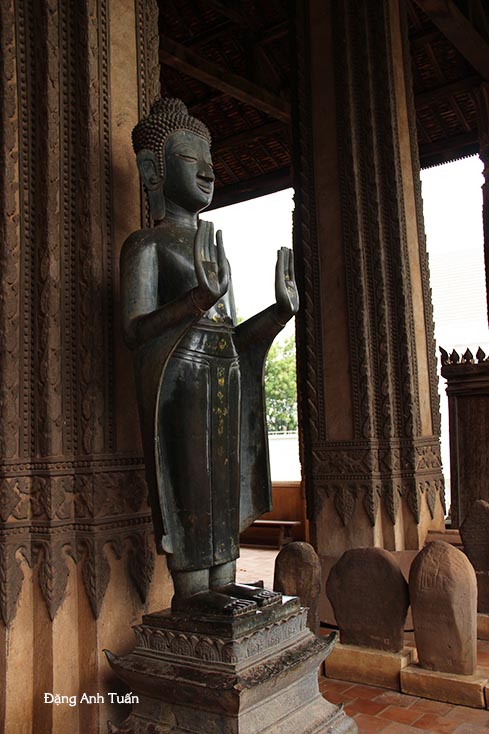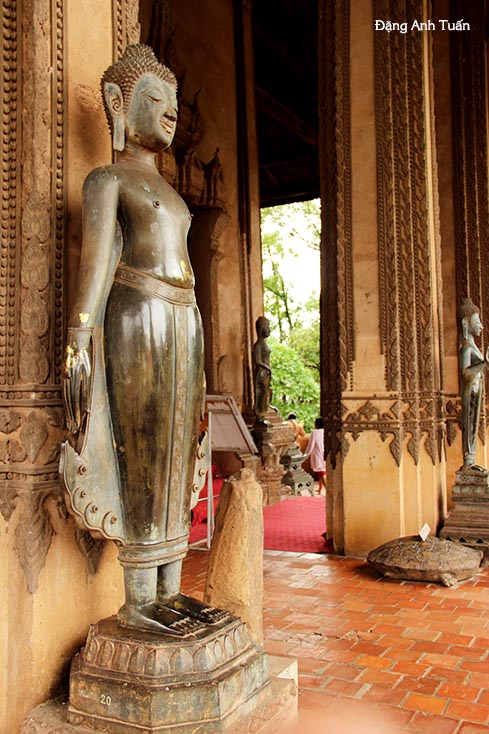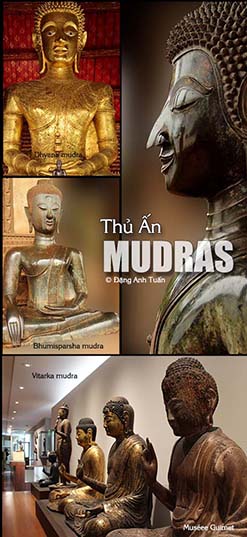The symbolic gestures
of Buddha ![]()
Depending on the manufacturing country of Buddha statue, the artist can represent it in a different way. By contrast, there is always some immutable ritual characters that he must observe scrupulously in the Buddhist statuary. This is the case of the position and gestures of the Buddha’s hands (mudras). Being limited in number, the latter, complemented by the body posture (asana), allows the faithful to benefit of the teaching and philosophy of Buddhism. One is accustomed to associate these symbolic gestures to the various episodes in the Buddha life (meditation under the Bodhi tree, taking the earth as witness, first predicate at Sarnath etc …). Instead of Buddhist texts to whom a very few people have acces, these mudras in the iconographic representations of Buddha are genuine tools for religious transmission. The picture is more meaningful because it is based on simple gestures and readable by all in place of Buddhist texts which are sometimes incomprehensible. The mudras that are initially designed by the yogis and priests of the Vedic epoch in India will be retrieved and interpreted by Mahayana sects to become over time, one of the techniques of highly codified representation. They thus constitute a language extremely powerful because through a number of signs and symbols, this allows you to identify the sacred character, to define its rank and to evoke its qualities.© Đặng Anh Tuấn
no images were found
Thủ Ấn
This is the case of the divinities of Buddhist pantheon (Bodhisattvas, Amithâba etc. . ). That is what we also find in multiple practices having a religious character (dances, rituals, meditations etc ..) without forget to remind what we have also seen in the Christian iconography with its saints placed at the entrance of the Middle Ages cathedrals. Some important mudras are frequently encountered in the Buddhist iconography.
Anhaya mudra
Absence of fear mudra

(Ấn xúc địa)
Taking the earth as witness with his right hand
It is the Bhumiparsha-mudra. In this gesture, one sees that his right arm hangs down over the right knee while his left hand is raised in front of his belly on his legs in position of lotus. He took the earth as witness and he called Goddess of the earth Torani to his rescue. To kill the hordes of evil represented by Mara, this godhead provoked the waves by letting down her hair. This mudra announced the imminence of the awakening. At the end of this meditation, he will announce the Four Noble Truths (Tứ Diệu Đế): Dukka (suffering), Samudaya (insatiable hunger), Nirohda (extinction of suffering) and Marga Sacca ( Buddha way towards extinction) to achieve nirvana (final liberation).

Charity mudra (Varada mudra)
Meditation mudra (Ấn thiền)
Buddha have been sitting with both hands in front of his belly, palms returned, on his legs crossed in lotus. It is the dhyana-mudra that is often found in zen school. This is the meditation period of Buddha under the tree of awakening (Bodhi) in Bihar.
Argument mudra (Ấn giáo hóa)
Sitting in position of lotus, Buddha maintains his right hand to the height of his shoulder, palm facing outward, the thumb and index finger touching and the other fingers being raised. This posture corresponds well to the discussion and argument.

